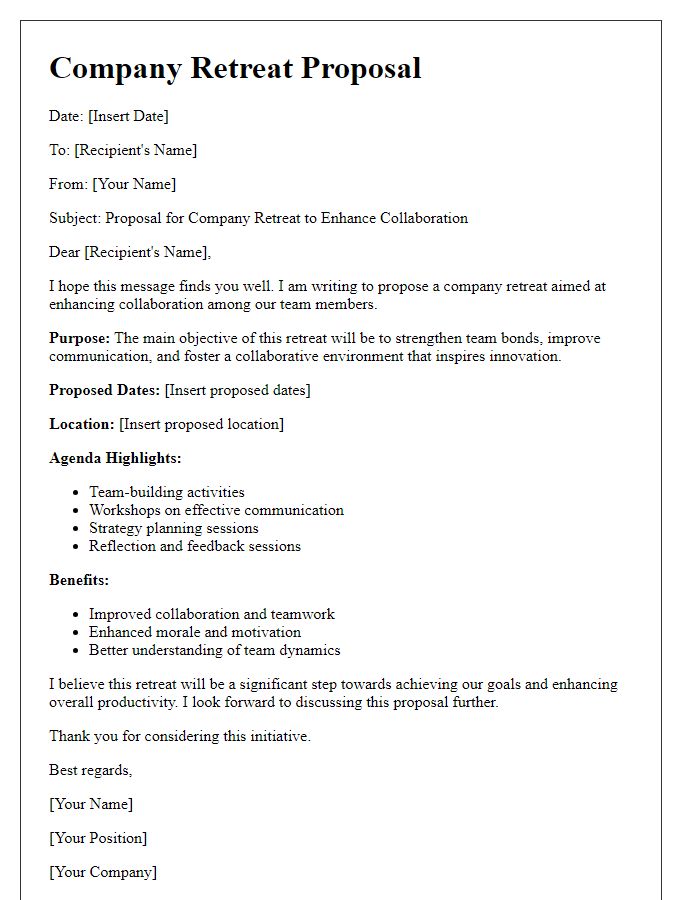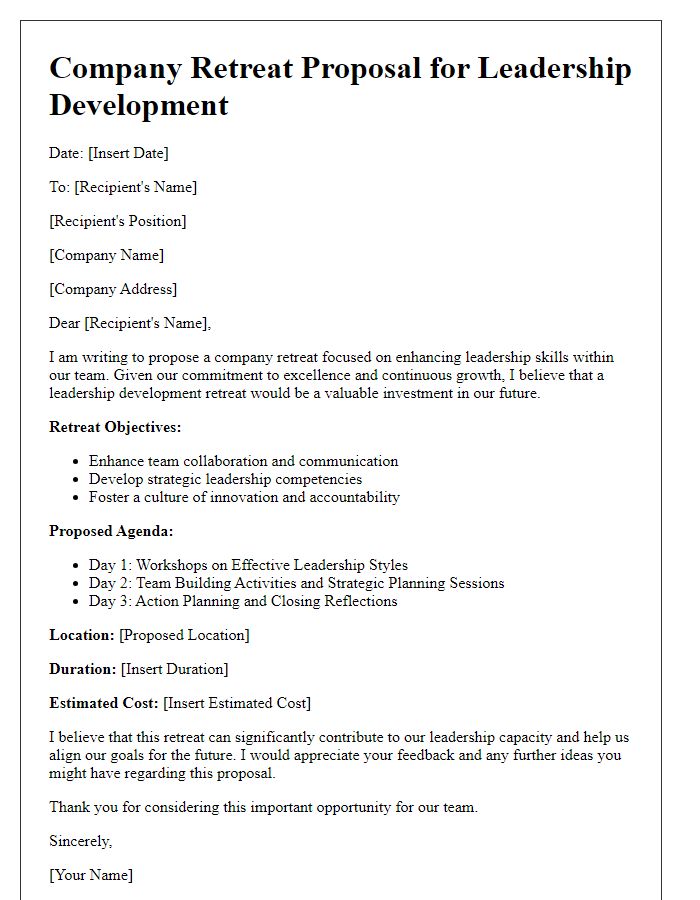Are you pondering the idea of a company retreat to boost team morale and creativity? Organizing a retreat can be a fantastic way to recharge, foster camaraderie, and spark innovative ideas among your team members. By stepping away from the everyday hustle, your employees can collaborate in a fresh environment and return with renewed energy and focus. If you're intrigued and want to explore how to plan an effective retreat, keep reading for insightful tips and strategies!

Purpose and Objectives
A company retreat serves as a strategic initiative aimed at enhancing team cohesion, fostering collaboration, and improving productivity within the organization. Key objectives include strengthening interpersonal relationships among employees, promoting open communication, and aligning collective goals with the company's vision. Activities are designed to encourage teamwork, such as trust-building exercises and brainstorming sessions, which can elevate employee morale. Additionally, setting time aside for professional development through workshops and guest speakers can enrich skill sets and inspire innovative thinking. The idyllic setting of a nature reserve or an upscale conference center can minimize distractions, allow for focused discussions, and ultimately contribute to a more unified, motivated workforce.
Budget and Cost Analysis
A comprehensive budget and cost analysis is crucial for planning a successful company retreat, scheduled for April 2024 at the scenic Green Mountain Lodge in Vermont. Estimated costs include venue rental at $3,000 for three days, accommodations for 20 employees at approximately $150 per night, totaling $9,000. Catering expenses will account for $1,200, covering breakfast, lunch, and dinner for the duration of the retreat. Transportation, including a charter bus for round trip travel from our headquarters in New York City, is projected at $2,500. An additional $500 is allocated for team-building activities, such as guided hikes and workshops. The final estimated budget for the retreat amounts to $16,200, ensuring a productive and revitalizing experience for the team, while fostering collaboration and engagement.
Schedule and Agenda
A company retreat proposal should outline a detailed schedule and agenda for team bonding and strategic planning. The itinerary may begin with a welcome breakfast at 8:00 AM, followed by a morning session focused on team-building exercises at 9:00 AM. Locations such as the Oakwood Resort in Lake Tahoe are ideal for outdoor activities, fostering collaboration among employees. At noon, a catered lunch featuring local cuisine is essential, providing an opportunity for informal discussions. The afternoon schedule includes a strategic planning workshop from 1:00 PM to 3:00 PM, facilitating brainstorming on company goals for the next quarter. A closing session from 3:30 PM to 4:30 PM will encourage feedback and reflections on the day's events. An evening social with a bonfire at 6:00 PM helps reinforce connections among staff. The proposal aims to enhance teamwork, boost morale, and align objectives for future success.
Venue and Accommodation
The selection of an appropriate venue plays a crucial role in the overall experience of a company retreat. Ideal locations include spacious conference centers or serene resorts that can accommodate large groups, providing facilities such as meeting rooms, breakout spaces, and recreational areas. For instance, venues like the Grand Traverse Resort in Traverse City, Michigan, or the Silverado Resort in Napa Valley, California, offer both stunning natural surroundings and comprehensive amenities. Accommodation options should include comfortable lodging for all attendees, with a mix of single and shared rooms to suit various preferences. Noteworthy hotels such as the Ritz-Carlton or Hilton brand hotels can ensure high levels of comfort and service, allowing employees to focus on team-building and strategic discussions without distractions. Additionally, considering proximity to local attractions could enhance the retreat by offering opportunities for post-conference activities that foster camaraderie and relaxation.
Team Activities and Benefits
Team-building activities during the company retreat can enhance collaboration and communication among employees. Engaging in outdoor activities like trust falls, rope courses, or hiking at locations such as Rocky Mountain National Park can foster teamwork and resilience. Workshops on conflict resolution and effective communication, led by expert facilitators, can boost interpersonal skills. Additionally, relaxation activities like yoga or meditation sessions can reduce stress and improve overall well-being. When employees collaborate in a stimulating environment, productivity increases, and workplace morale rises, leading to a more cohesive corporate culture.
Letter Template For Company Retreat Proposal Samples
Letter template of company retreat proposal for enhancing collaboration.

Letter template of company retreat proposal for achieving work-life balance.

Letter template of company retreat proposal for cultivating company culture.

Letter template of company retreat proposal for client relationship strengthening.










Comments